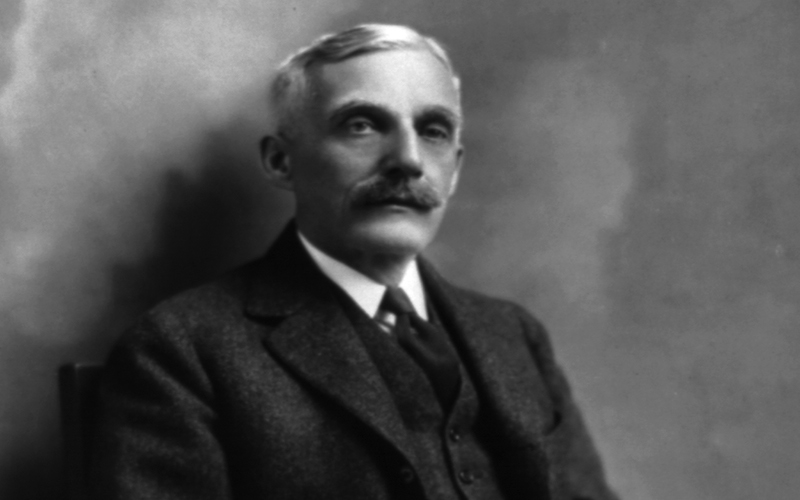
by Irvin Goldman | Jun 5, 2015
Andrew William Mellon was born in 1855 and before his death in 1937, he would serve as the United States Ambassador to the United Kingdom, act as the United States Secretary of Treasury and amass great wealth in banking. Most importantly, he would go on to donate an art collection valued at $40 million and $10 million in construction for the establishment of the National Gallery of Art (NGA) located in Washington, D.C.
Mellon was as dedicated to art and philanthropy as he was to business enterprise. Not satisfied to give sporadically to causes, Andrew W. Mellon was a generous and prolific patron of the arts. The Robber Baron began amassing his private collection of old master paintings and sculptures during World War I, eventually focusing his collection towards the curation of a national gallery for the U.S.
In 1930 the A.W. Mellon Educational and Charitable Trust was founded by Mellon as the legal owner of the gallery collection – with its first acquisition being such masterpieces as Raphael’s Alba Madonna and Jan van Eyck’s The Annunciation.
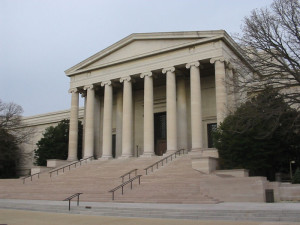
National Gallery of Art
The National Museum of Art was designed by renown Jefferson Memorial architect John Russell Pope and was the largest marble structure in the world at the time of its construction. Both Pope and Mellon died 4 years before the completion of the expansive building but its erection accomplished what Mellon intended: the impetus for other wealthy patrons to donate to the gallery.
The museum breaks up into two major buildings: the West Building and the East Building. The former contains collections of European paintings and sculptures from medieval to 19th century era, as well as American art from the turn of the century. Art by Vermeer, Monet and van Gogh can all be found featured in this West Building.
The East Building, by contrast, houses modern and contemporary art, with collections by Pablo Picasso, Jackson Pollock and Roy Lichtenstein to name a few. The East Building contains the main offices of the NGA and a large research facility, Center for Advanced Study in the Visual Arts (CASVA).
Mellon was deeply interested in the preservation and education of art in the United States. Perhaps in keeping with that sentiment, the gallery remains a public and free space for visitors.
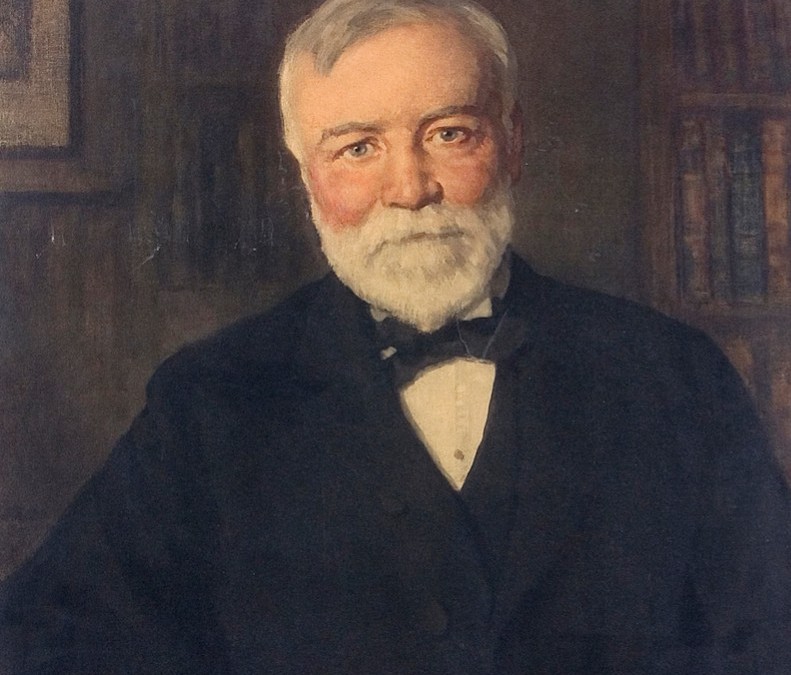
by Irvin Goldman | May 22, 2015
Andrew Carnegie was a Scottish American industrialist once called “The Richest Man in the World”, amassed a vast fortune from the steel industry in the late 19th century. He spearheaded the idea of philanthropy amongst the industrial era’s ultra rich, giving away approximately $350 million to charity (or about 90 percent of his fortune) in his lifetime.
In 1889 he penned an article The Gospel of Wealth by which he called on the rich to improve society through philanthropic endeavors – as an obligation to the disadvantaged. Carnegie’s outspoken political views on the plight of the poor were often met with criticism but was successful in subsequently inspiring wealthy industrialists to create foundations, endowments and cultural institutions.
The origins of the Carnegie Museum of Art in Pittsburgh can be traced back to one initial concept which was summed up by Carnegie himself, “I am thinking of incorporating with the plan for a library that of an art-gallery in which shall be preserved a record of the progress and development of pictorial art in America.”
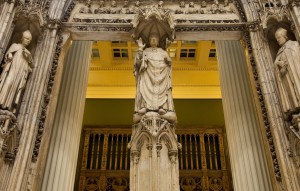
Carnegie Museum Pittsburgh
The Carnegie museum was the first true collection of modern art from inception, as referred by the industrialist as containing the “Old Masters of tomorrow”.
Under the directorship of Leon Arkus, the 125,000 square feet Sarah Mellon Scaife Gallery was built as an addition to the Institute. It first opened its doors to the public in 1974 with a surge of accolades.
The gallery has been in a state of fluid renovation ever since.
Next week, Part V: The Collection of Cornelius Vanderbilt
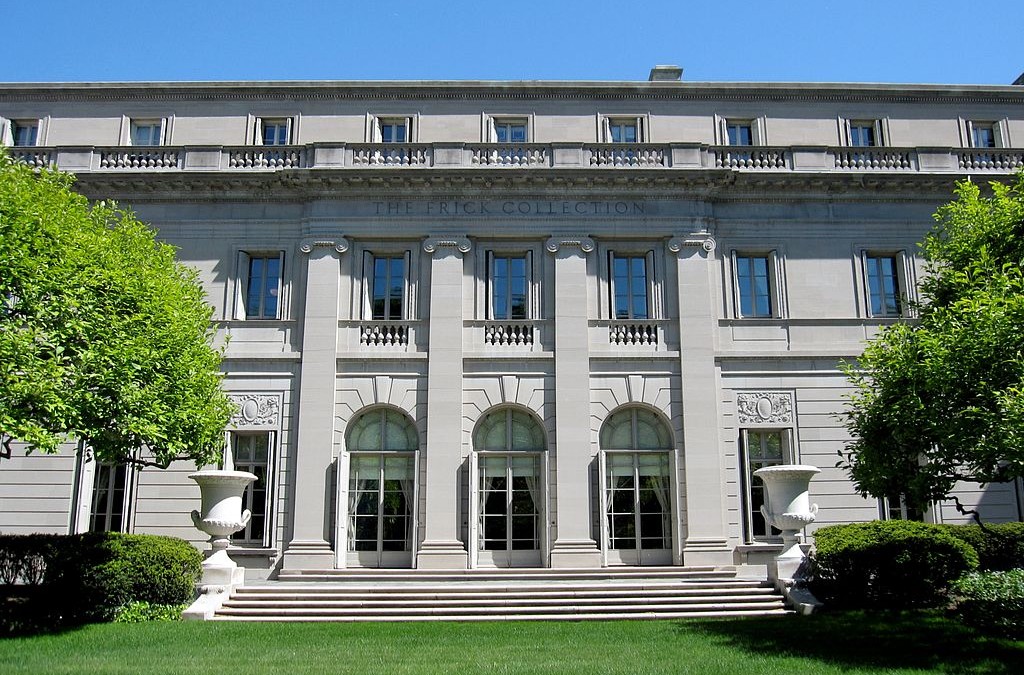
by Irvin Goldman | May 11, 2015
Henry Clay Frick was an American industrialist, financier and curator of art. His patronage eventually led to a large collection of old master paintings and furniture, a park and many other contributions for the public. Despite all his posthumous donations, he was never able to shake his moniker as “the most hated man in America.”
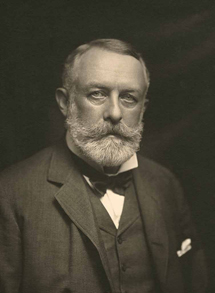
Henry Clay Frick
Frick’s immense wealth came through several successful endeavors throughout his life, including H.C. Frick & Company, Carnegie Steel and his further involvement in the evolution of the steel industry in the United States. Once his wealth was amassed, Frick turned his sights to art collecting as soon as his net worth began to grow. His collection grew to staggering heights. Today, a large portion of the collection remains in his former Pittsburgh residence, Clayton, that serves as part of the Frick Art & Historical Center.
The acclaimed New York Frick Museum started as his Manhattan mansion, which is now a city landmark. The architectural beauty would be Frick’s home until his passing in 1919. Upon his death, Frick willed the house and all its valuable objects as a museum for the public. However, his widow Adelaide continued to live in the mansion with her daughter until her passing in 1931. Finally, Frick’s vision for his collection would begin to reach fruition.
After Adelaide’s passing, the conversion began with architect John Russell Pope enhancing the mansion for the public. After four years of renovating, the Frick Collection opened to the public in December 1935.
Since its opening, the collection continues to receive praise of one of the country’s premiere small art museums. The collection consists of exquisite paintings, sculptures and porcelain art in addition to the beautiful furniture across six galleries on the property. Much of Frick’s design plans remain intact. To enhance the collection and public appeal, the collection hosts temporary exhibitions as well.
Further expansions of the museum took place in 1977 and in 2011.
Next week, Part IV: The Collection of Andrew Carnegie
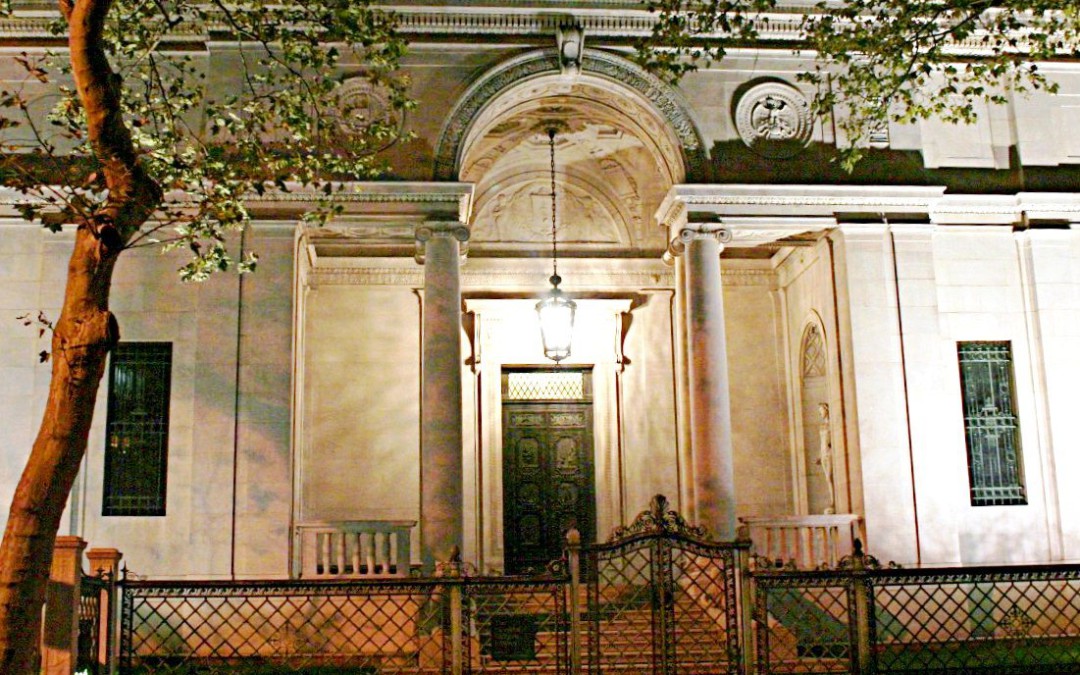
by Irvin Goldman | Apr 24, 2015
The Morgan Library & Museum was founded in 1906 to house the personal collection of John Pierpont (JP) Morgan, banking mogul and robber baron. His passion for art drew him towards Egyptian to Impressionist, to Chinese art. But his true passion was printed materials: manuscripts, printed books and old drawings. It was due to this obsession that a personal collection of the earliest Egyptian and American text was curated. But aside from what treasures abound inside, it should be noted that the edifice which holds Morgan’s collection is as indicative of the decadence of the era as what is within.

Exterior of Morgan Library and Museum
The impressive structure, located at 225 Madison Ave at 36th street, stands close to where JP Morgan once lived. The two lionesses guarding the entry are a perfect counterpart to the lions of the main branch of the NYC public library just a few blocks away. Today, $1.2 million may be a small price to pay to erect an institution. But in 1906, when it was constructed, the sum was gasp-worthy, and Morgan kept a watchful eye over every dollar spent.
The interior of the building is richly decorated, with a rotunda leading to three public rooms: Morgan’s private study, the librarian’s office, and the library itself. Morgan’s study, now the West Library, has been called “one of the greatest achievements of American interior decoration”, with vast domed ceilings and classical revivalist murals (a particularly American style that was en vogue for the elite moneyed class of his day.) The east Library ripples with triple tiers of mysterious books and manuscripts, some being the oldest and most ancient texts of Egypt and the United States that exist today.
Other rarities include the Codex Glazier (a Coptic parchment of the New Testament from the 4th or 5th century), one of the world’s greatest collections of ancient Near Eastern cylinder seals (small stone cylinders finely engraved with images for transfer to clay by rolling) and a copy of a letter written from India in 1516 by Andrea Corsali containing the first description of the Southern Cross. This letter is one of the only 5 of its kind in existence.
The most striking aspect of the Morgan Library & Museum is that it is alive with John Pierpont Morgan’s obsession for the written word. Even today, the works encased have a relevancy which makes it ‘a living museum’, with rare collections open to scholars and students for active study.
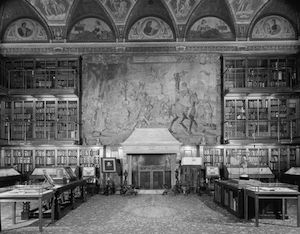
Interior of Morgan Library and Museum
With continual generous endowment, partly due to the exceptional curatorial and management staff, the Morgan remains active in its acquisitions and stalwart in its preservation of the core collection. Alongside Morgan’s original collection of manuscripts, the Morgan Library & Museum now also houses early children’s books and other text-driven manuscripts.
In considering the written word as the ultimate form of art, JP Morgan knowingly or unknowingly supported the theory that history itself is art.
Next week, Part III: The Collection of Henry Clay Frick
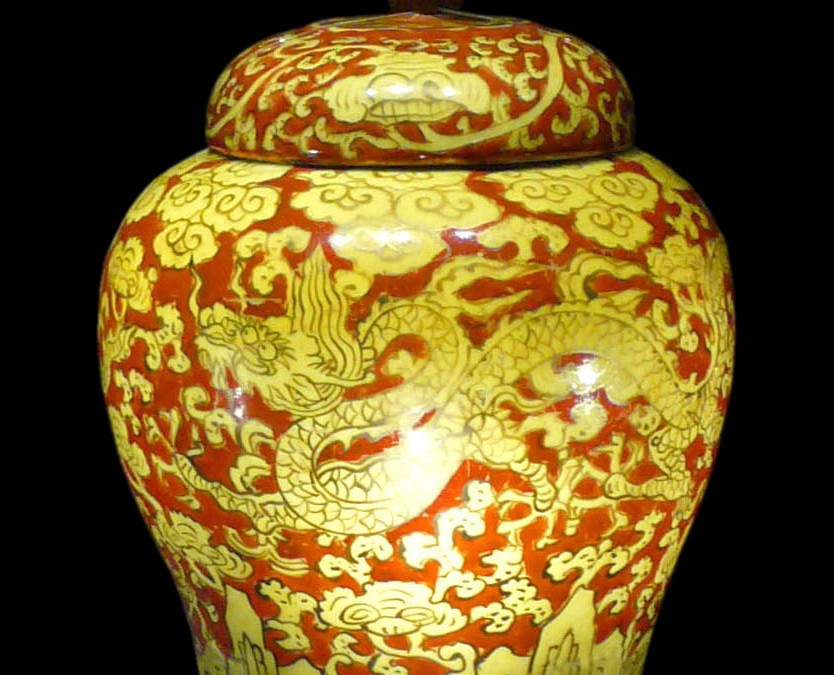
by Irvin Goldman | Apr 13, 2015
When we think about the early giants of American industrial capital: Frick, Astor, Carnegie, Morgan, Crocker, Vanderbilt and Gould; we generally think of larger-than-life entrepreneurs who flooded the markets with commodities and services – and art.
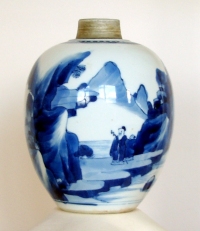
One of the products of exorbitant wealth in the industrial age was philanthropy. Men like John Pierpont Morgan (JP Morgan) and Henry Clay Frick chose to nourish, develop and enhance humanity through the collecting of fine art. Though the motivating force may have been ownership, acquisition for those purposes fortuitously created invaluable collections of exotic artifacts and European artwork.
Egyptology was catching fire and Eastern essentialism had begun in earnest with Chinese pottery, Mesopotamian art and curious becoming the tell tale signs of wealth. From New York to Detroit, the competitive enterprising spirit of the robber barons translated to art curation as each of would try to outdo the other. The American barons were positioning themselves in history to be erudite men of culture.
For us the endowment of these personal collections of art are a wonderful gift. Often housed in an original, historical mansions, they show us the unique and oftentimes eccentric curatorial choices made by the men who boldly charted the trajectory of America’s economic future. They represent the innate desire of a collector to rescue unique objects from the uncertainty of circulation, to give them a resting place, to own them and to cement them into the history of a nation.
Next week, Part II: The Collection of JP Morgan.





















